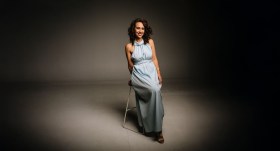Having a cover letter that can make you stand out from the crowd is evermore important, especially when job applications are all online and highly competitive in the arts sector.
While channeling creative impulses into a cover letter may not be a bad idea, basics like good grammar and spelling, being authentic and simply nailing the structure are a good start.
Here, we gather together the resources that can help put your application letter ahead of the game.
1. Nailing the basics
Fundamental elements should be included in your cover letter, regardless of whether it’s in the body of an email or sent as an attachment.
Cover letters should only be one page, at least single-spaced and font size 10. If you are worried about formatting on different displays, convert it to a PDF to be safe.
Title your document/email appropriately to make it easier for the recruiter. Something like Application for ‘job title’ (surname) works great.
For first time writers, these samples from Youth Central will get the juices flowing, conveniently categorised by level of job experience.
Director of Creative Plus Business Monica Davidson emphasised that spelling and grammar absolutely matter: ‘If the person reading doesn’t care about these things, they’ll still appreciate the effort. If the person DOES care about those things, trust me, they (we) can be very judgy, so take the extra time to be careful and do your best.’
Reading your letter aloud, asking for a friend to check or putting it through software such as Grammarly will avoid a slip up that might just damage your chances.
2. Tailor it to the job
Davidson shared: ‘The most important element of a cover letter is NOT you, it’s the person reading the letter.’
This means reading through the criteria carefully, and outlining from the start why picking you for the job would be beneficial for the company.
‘The goal here is to be persuasive, and not just impressive,’ added Davidson.
Read: The adage ‘fake it till you make it’ has become easier thanks to Zoom
It might be helpful to go through the listing and highlight keywords, outlining those that align strongly with your expertise in the cover letter.
‘Empathising with your prospective employer is a great way to show them that you are intelligent, professional and sympathetic to their needs. It’s also INCREDIBLY rare so you’ll stand out from the pack,’ Davidson explained.
3. Be professional, be authentic
Strike a balance between professionalism and showing your true self, ‘you are creative and so your authentic voice matters,’ said Davidson.
‘Try to imbue the letter with your own voice, your personality and your brand. If you’re a funny person, don’t hide that humour. If you like big words, use them.‘
Often in the arts, a company’s culture is central to its success, so don’t be shy to show your passion.
4. Back every claim with an example
For example, after saying that you are a good team player, mention a project or experience where you were able to help your team strive to the greatest potential. This is also a great opportunity to mention key skills such as being reliable, displaying exceptional communication and the willingness to help others.
Read: Do I really need LinkedIn? (I’m creative)
Furthermore, it’s not always just about the arts, the sector is intertwined with commerce, law, marketing, communications etc. As such, other qualifications can give you an edge too.
COLD-CALLING EFFECTIVELY
Always dreaming about working at an organisation but they are not hiring? It’s still possible to try your chances by sending out a cold call.
Try to dig out an email contact as close to HR as possible, or give the organisation a quick call to ask what’s the best place to send the email.
In this case, the email is your cover letter and being straight to the point will improve your chances of getting a reply. Make use of the subject line to be direct with something like ‘3-year arts worker seeking development opportunities.’
You won’t have time to tell a story, so every paragraph needs to carry a message. Rather than letting you know whether they would like to see your resume or portfolio, attach it for their consideration.
Close with an action such as when you are looking to follow up the email and how best to reach you.
EXTRA RESOURCES
The Atlantic have an article on How to Write a Cover Letter According to Great Artists including the likes of Leonardo da Vinci and Eudora Welty. It’s an inspiring read, if not to just free yourself momentarily from the robotic click and send.
Pro at the basics or just feel like you’re not getting anywhere with the usual format? Try a disruptive cover letter that allows your creative impulse to run free. The aim here is to differ and make a memorable impression that will leave recruiters wanting more.
If you’re an artist, cover letters may not just be for job applications, but also accompany a grant, project proposal or portfolio. The site Get Your Sh*t Together has put together resources directed specifically to artists.
UK site Prospects have a detailed guide on cover letters for graduates, also cover letters for a career change and how to disclose a disability in a cover letter if you wish to do so.
Check out the latest job opportunities available on ArtsHub.





